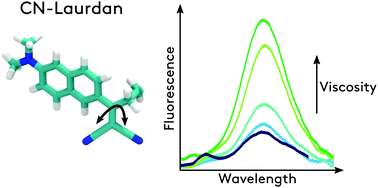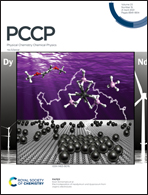Computational and photophysical characterization of a Laurdan malononitrile derivative†
Abstract
The malononitrile group is considered one of the strongest natural electron-withdrawing groups in a chemist's arsenal. However, surprisingly little is known about how this group functions in push–pull fluorophores. In a recent computational study, we reported that replacing the ketone group of the traditional push–pull dye Laurdan with a malononitrile group significantly improves the optical properties while retaining the membrane behavior of the parent molecule Laurdan. Motivated by these results, we report here the synthesis and photophysical characterization of the said compound, 6-(1-undecyl-2,2-dicyanovinyl)-N,N-dimethyl-2-naphthylamine (CN-Laurdan). To our surprise, this new CN-Laurdan probe is found to be much less bright than the parent Laurdan due to a large drop in the fluorescence quantum yield. Using computational methods, we determine that the origin of this low quantum yield is related to the existence of a non-radiative decay pathway related to a rotation of the malononitrile moiety, suggesting that the molecule could nonetheless function very well as a molecular rotor. We confirm experimentally that CN-Laurdan functions as a molecular rotor by measuring the quantum yield in methanol/glycerol mixtures of increasing viscosity. Specifically, we found a consistent increase in the quantum yield across the entire range of tested viscosities.

- This article is part of the themed collection: 2021 PCCP HOT Articles


 Please wait while we load your content...
Please wait while we load your content...